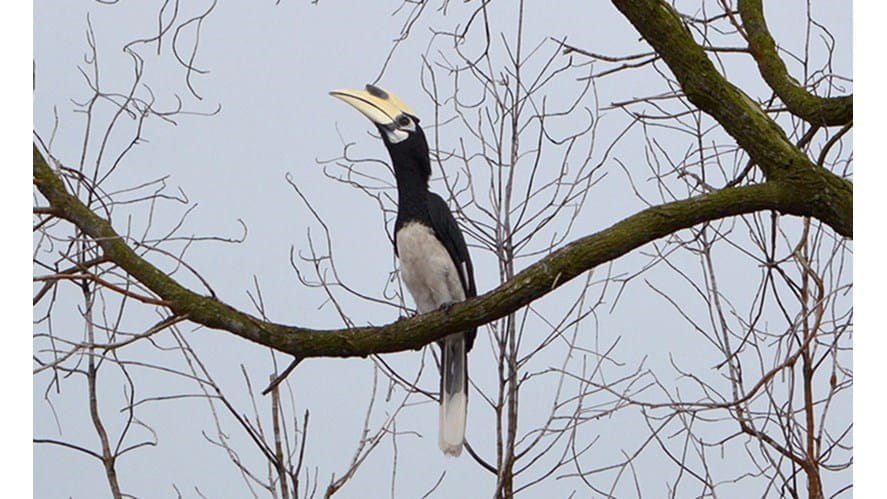Five big hornbills perched in tree near Upper Primary Cafeteria
Join Dover Court this January!
Limited places still available in select year groups - Enquire Today

Five big hornbills perched in tree near Upper Primary Cafeteria
Five big hornbills perched in tree near Upper Primary Cafeteria
This week we were visited by five Oriental pied hornbills in the big tree near the Upper Primary Cafeteria.
Oriental pied-hornbills are commonly seen on Pulau Ubin and sometimes also at Changi. They are the only truly wild hornbills found on Singapore. Unlike most other hornbills, Oriental pied-hornbills often visit inhabited areas (like DCIS!) to feed on fruit.
A large bird (about 70cm) with black-and-white plumage, the hornbill's trademark is its large, long bill. The bill, however, is not as heavy as it appears. It is not made of solid bone but of a honeycombed tissue. An adult Oriental pied-hornbill has a knob on top of the bill which is yellow-white.
Hornbills eat mainly fruit, but they also take insects and small animals including reptiles, birds and mammals. When they do call, it is harsh and penetrating and has been described as a loud, staccato cackling; or a yak-yak-yak; and even as the cackling of a witch on a broomstick! They fly rather awkwardly.
Oriental pied-hornbills nest in a suitable hole in a tall tree. The breeding pair seals the female inside the hole with a plaster of mud and fibres. The male then gathers and delivers earth to the female, which seals herself inside the hole. A narrow slit is left open so he can feed her and the chicks. He brings them mostly fruits, insects, crabs and lizards, and sometimes, smaller birds. This remarkable behaviour is believed to deter large predators.
The Oriental pied-hornbill plays an important role in the health of the forest as it disperses seeds that are too big for smaller birds to eat.
And if we are lucky, perhaps these hornbills will nest in our tree!